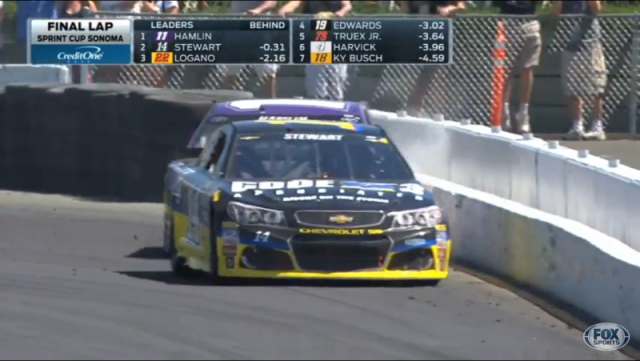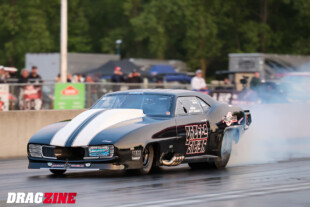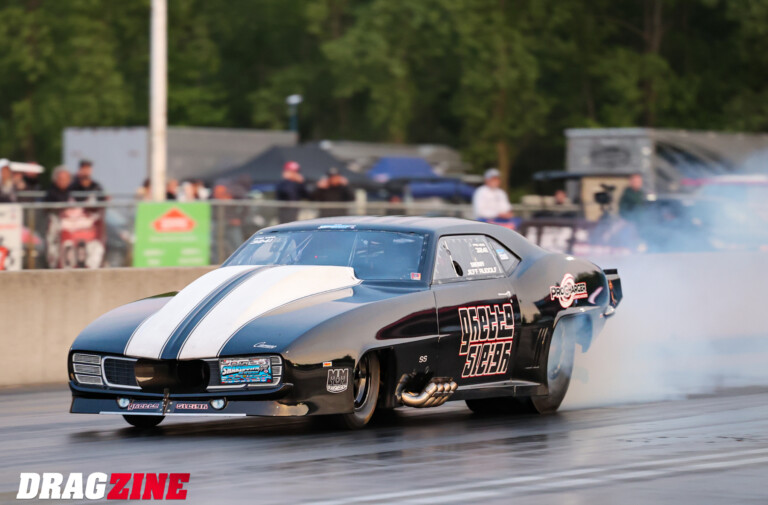Max Papis might be one of the more controversial figures in American motorsport, but that’s because his ability behind the wheel has never been disputed. He might invite incident, but when he’s revved up, the man becomes a force of nature on the track. Despite his public perception as a hothead, Papis does display tremendous discipline and finesse behind the wheel, as evidenced by this footcam showing the man at work wrestling a NASCAR around a road course.
Papis shows us that, as with most modern racing gearboxes, if a clutch is present it isn’t always necessary for shifting. Once the car is rolling along at a reasonable pace, the clutch pedal is released and the left foot goes to work braking. With great speed and finesse, Papis lifts his right foot in a blur between gears, making the most of the quick shifting offered by the dogbox transmission.

For the heaviest braking zones, Papis uses his left foot to depress the clutch and soften the downchange.
Initially with his left foot, Papis maintains strong pressure on the brake pedal for quite a long time. As he discusses during his cameo in our latest NASCAR-centric article, the lack of downforce, relatively low levels of grip, and smaller brakes require a NASCAR to be braked in a specific sense. Essentially, these traits mean brake pressure doesn’t peak quickly and rapidly like in a protoype or aero-laden car, which take an enormous amount of speed off initially as the wings are pressing the tire firmly into the ground.
Instead, a NASCAR, which relies predominantly on mechanical grip, requires a smoother brake application to allow for the car to “take a set,” or transfer weight first. Then, that pedal is held with strong pressure for a longer period of time until the brakes are finally released around corner entry.

A hurried downshift can see a NASCAR driver into the wall, as Danny Hamlin experienced at Sonoma 2016.
Interestingly, as the pace and the braking forces increase, Papis begins to use the clutch to heel-and-toe downshift. This is due to the fact that the massive engine braking on hand means a sloppy or forceful downchange can lead to excessive driveline vibration, also known as wheel-hop, which lengthens the braking distances by reducing the time the tire is actually in contact with the road. By releasing the clutch smoothly and precisely, that problem can be avoided and late-braking maneuvers can be executed. Unfortunately, Denny Hamlin didn’t seem to get the memo.





















